Heat, dust, and treasure

It was already well on the way to the forecast high of 42 degrees in Luxor when I left my accommodation and walked towards town. I was heading to the Valley of the Kings, one of Egypt’s most astounding ancient sites. For around 500 years, the monarchs and noblemen of the Egyptian Empire were buried in the sides of a steep valley west of the Nile within spectacularly ornate tombs. The mighty Ramses II, and King Tutankhamun, were amongst the role call of heavy hitters that had their mummies entombed in the Valley of the Kings. There are sixty-three known tombs in the Valley, of which eleven are open to the public.
I needed a cab to get out to the Valley, but knew that finding one would be a simple matter. As soon as I appeared in the street, calls of ‘Tax! Tax!’ rang out. Choosing the first driver, I then began the uncomfortable job of haggling over the fare. Having been in a few private hire cars in Cairo, I had a fair idea of what a fair fare would be for the trip. I’m not a patient barterer; my tactic is to offer what I reckon is a reasonable price based on experience, and if the driver doesn’t accept it – give or take a little – I walk on to the next cab. The first driver acted like I had insulted his mother when I offered my price, but when I walked off soon called me back. I folded up into the front seat of his Peugeot 504 and off we went.
The humble 504 has not been built in Europe since the early 1980s, however production continued into the mid-2000s in Nigeria and China. Peugeot 504 cabs keep on keeping on in the do-or-die arena that is Egypt’s road network, delivering thousands of people unsafely to their destination every day. I don’t know what age my taxi was; things don’t tend to rust in Luxor as it never rains so it makes it hard to tell. I found the silent journey a little uncomfortable, not because we couldn’t speak each other’s language, but rather that we had just had a blue in the middle of the street over the fare and now had to spend 25 minutes sitting next to one another.
The drive out to the Valley of the Kings gave me my first proper look at arid Egypt. I have to say, there wasn’t a lot of feed about.
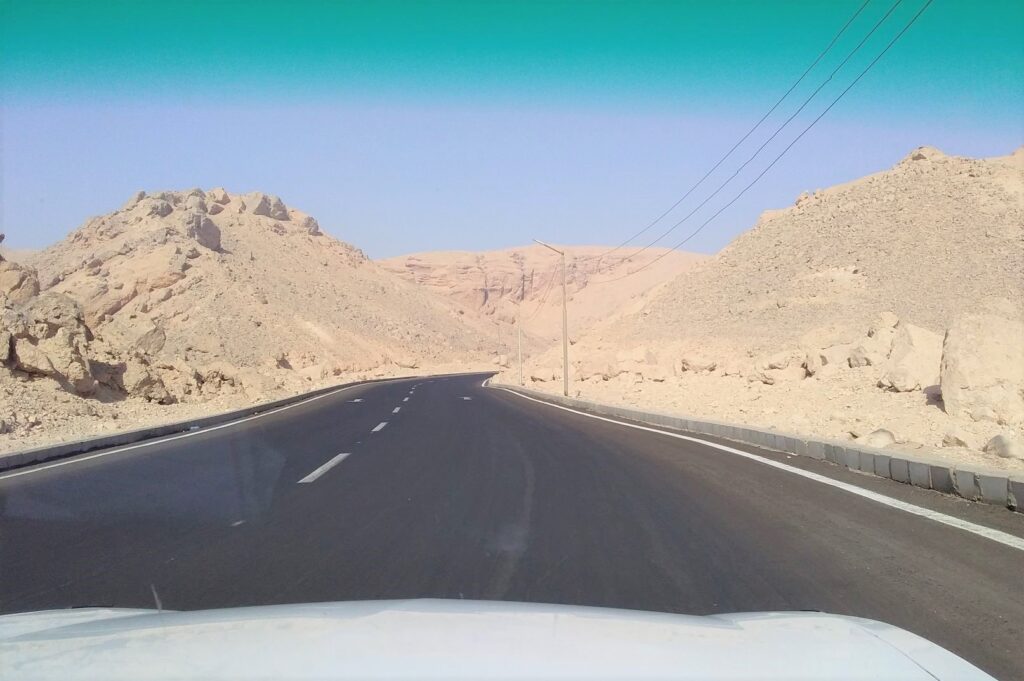
After reaching the entrance to the site, I headed through the ubiquitous security screen, and had my backpack and lunch inside duly radiated. As had been a feature of my time in Egypt, this major tourist attraction was a little on the quiet side.
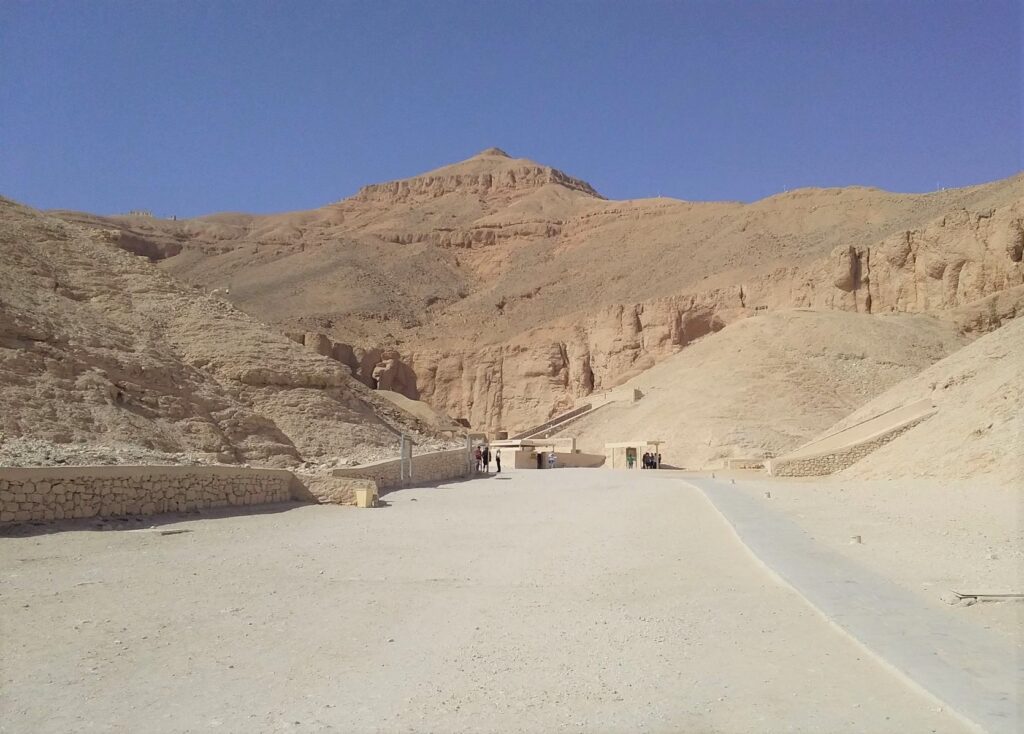
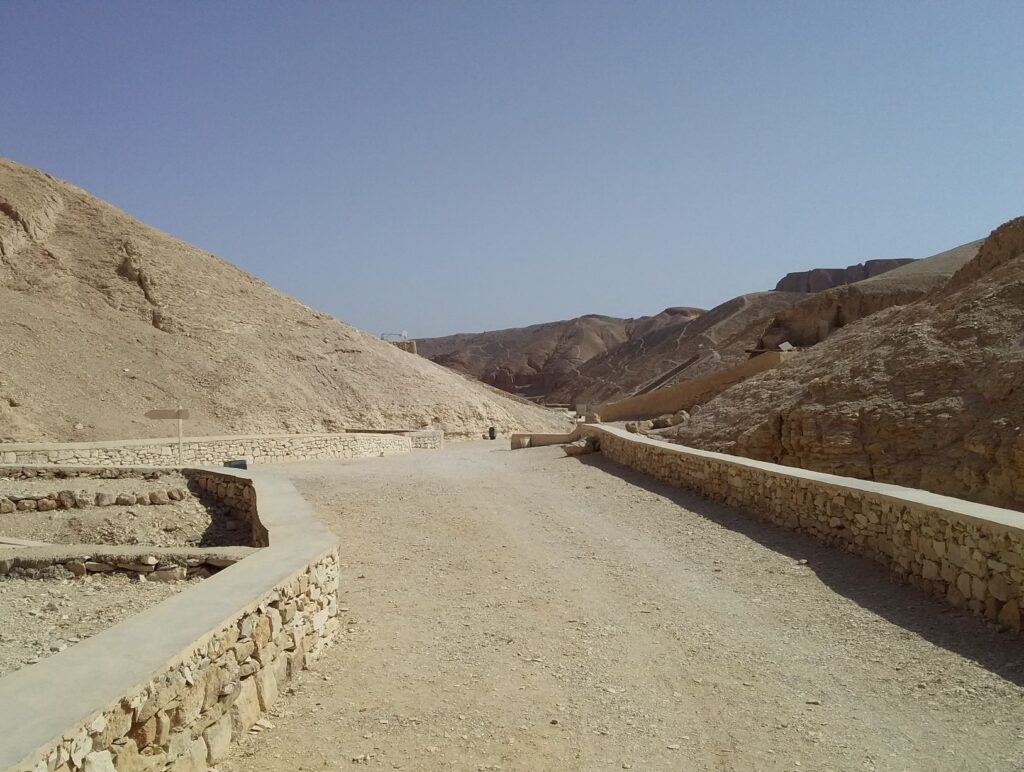
Soon after I arrived I discovered that all the scams, minor corruption, and pressure to hand over cash I had to endure at the Pyramids was also prevalent at the Valley of the Kings. I won’t dwell on it, but it suffice to say my visit would have been more enjoyable without it.
When you visit the Valley, you can buy a ‘standard’ ticket that lets you view three tombs, and then extra passes for some of the most spectacular sites. Figuring I wouldn’t be back in Luxor anytime soon, I forked out so I could visit all the tombs on offer. I decided to start at the furthermost tomb and work my way back.
I climbed up the gravel path and arrived at the tomb of Tausert/Setnakht. This tomb was originally built solely for Queen Tausert, however King Setnakht, father of Ramses III, was also popped in there when Ramses decided to pinch the tomb being constructed for his old man for himself. I was the first visitor to arrive for the day, and the caretaker unlocked the gate and welcomed me inside.


I descended down the ramp into the depths of the tomb, the walls inscribed with images of Tausert and the gods. I followed the long passage, passing side rooms and exquisite artwork until I stood in the final burial chamber. I was the only one in the tomb, and deep underground it was cool and completely, utterly quiet. I looked around me, soaking up the fact that I was standing in a place built over 3,000 years ago.
I could hear voices coming down the passageway, so decided to leave Tausert and Setnakht’s final-ish resting place (many of the royal mummies were shifted from their original tombs and placed elsewhere to protect them from grave robbers) and explore some of the other sites. Although I saw some other breathtaking tombs, this first one I entered was particularly striking. Perhaps it was just that it was the first, or maybe because I had it all to myself. Or both.
My experience of Ramses III’s tomb was very different (you may remember that Ramses was the bloke who took his own father’s tomb for himself). Ramses III’s tomb is spectacular, and is particularly popular as it is one of the eight tombs which don’t require an additional ticket. Consequently, compared to Tausert/Setnakht’s, it was packed. Now I realise that the ‘crowds’ in Ramses III’s tomb were probably still very light when compared to visitor numbers when there isn’t a worldwide pandemic, but it still impacted heavily on my enjoyment of the site. It wasn’t so much the numbers, it was the actions and the noise.
Sadly, these ancient sites of reverence, remembrance and worship have been reduced to backdrops for tacky novelty holiday selfies and amateur fashion shoots. Many visitors appear to only be at the Valley of the Kings in order to take photographs of themselves and their mates, rather than to experience the place itself. The shouting, laughing and general noise level inside the tomb was reminiscent of a Sunday Session in the local pub beer garden. At one stage, whilst blocking the passageway, four Spanish-speaking girls, holding each other’s arms, started a three-word chant, which they repeated four times, each repetition louder than the previous, until they were yelling and howling with laughter. I couldn’t believe it.
Despite the unwanted distractions, Ramses III’s tomb was breathtaking.


There’s a covered outdoor cafe within the Valley of the King’s complex, which provides visitors some welcome shade and refreshment. I found a quiet spot in the upstairs area, next to a policeman who despite that fact that it was 42 degrees was wearing a woollen jumper.
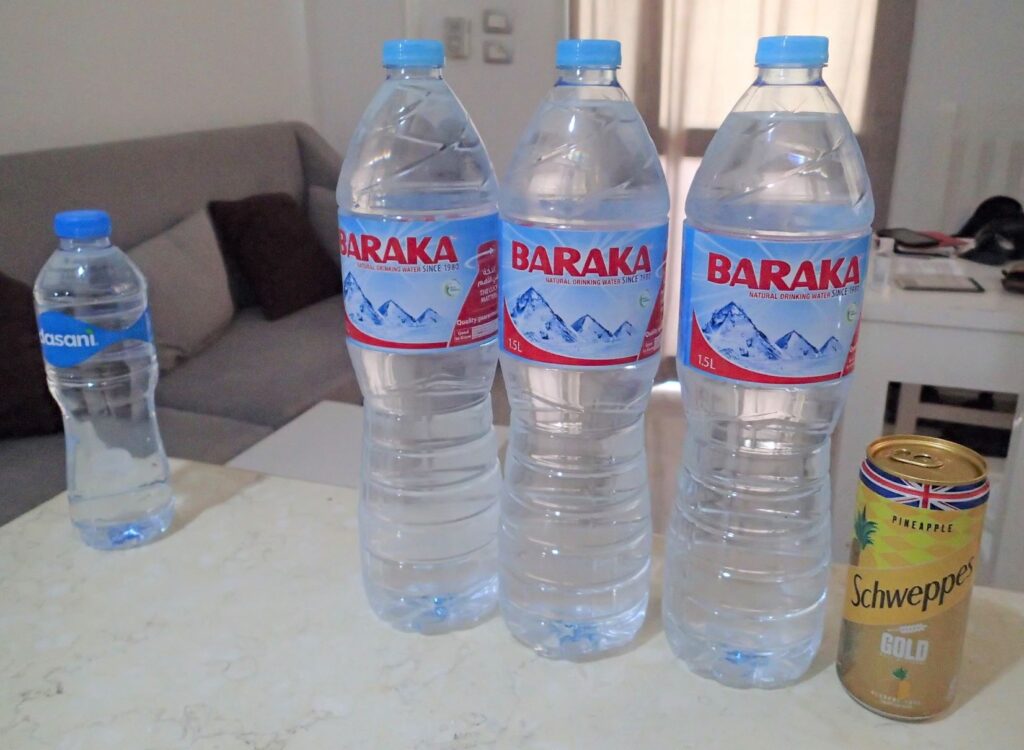
The monopoly enjoyed by the the Valley of the Kings cafe provides a wonderful opportunity for some good old fashioned price gouging. The same money that buys the small bottle of water on the left at the Valley buys the drinks on the right in town. Nice.
After a spell, I started exploring the remaining accessible tombs. One of the sites requiring an extra ticket was the resting place of Ramses VI, and I had it pretty much to myself, which was a welcome relief from the circus inside his dad Ramses III’s tomb.
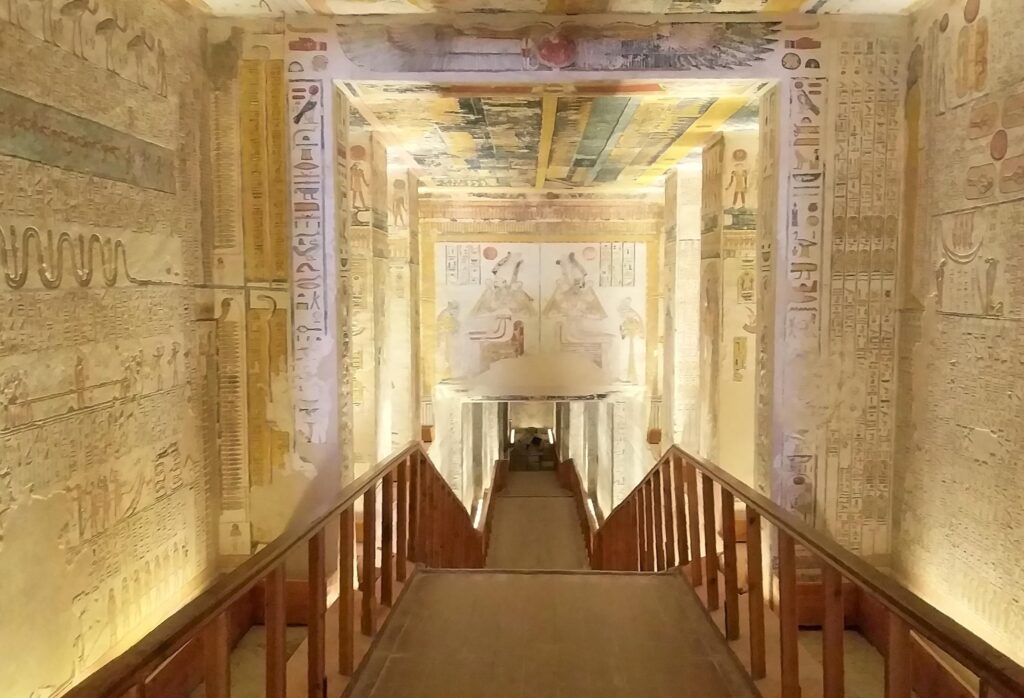
The interiors of the passageways and chambers within the Valley of the Kings’ tombs are decorated with ancient funerary texts. Art within Ramses VI tomb includes the Book of Gates, Book of Caverns and the Book of the Dead. Astronomical scenes and writings adorn the ceilings.
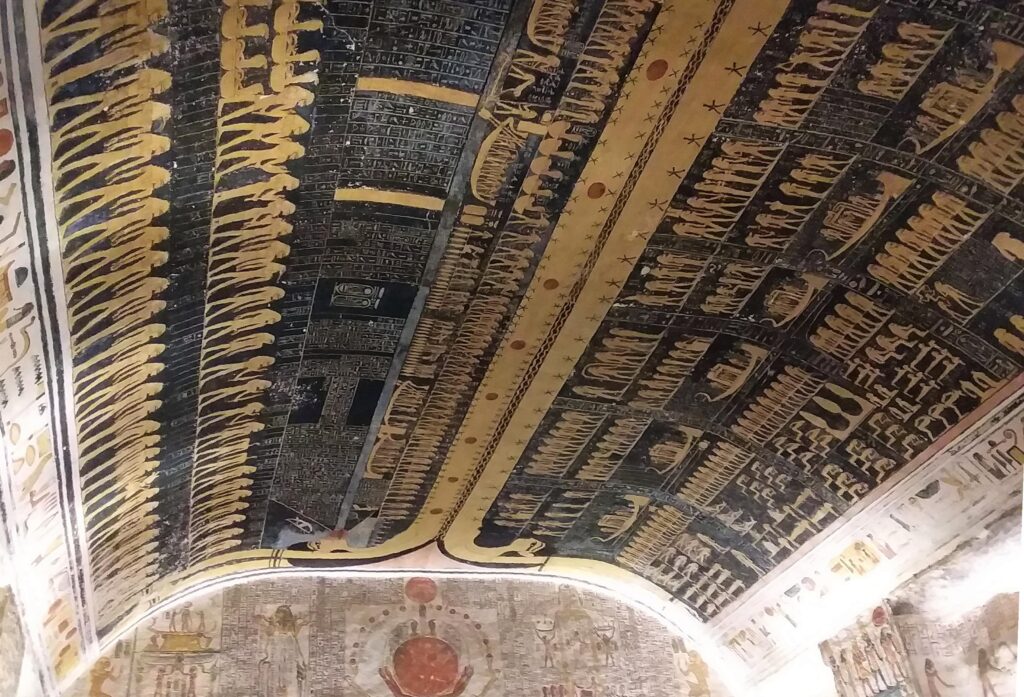
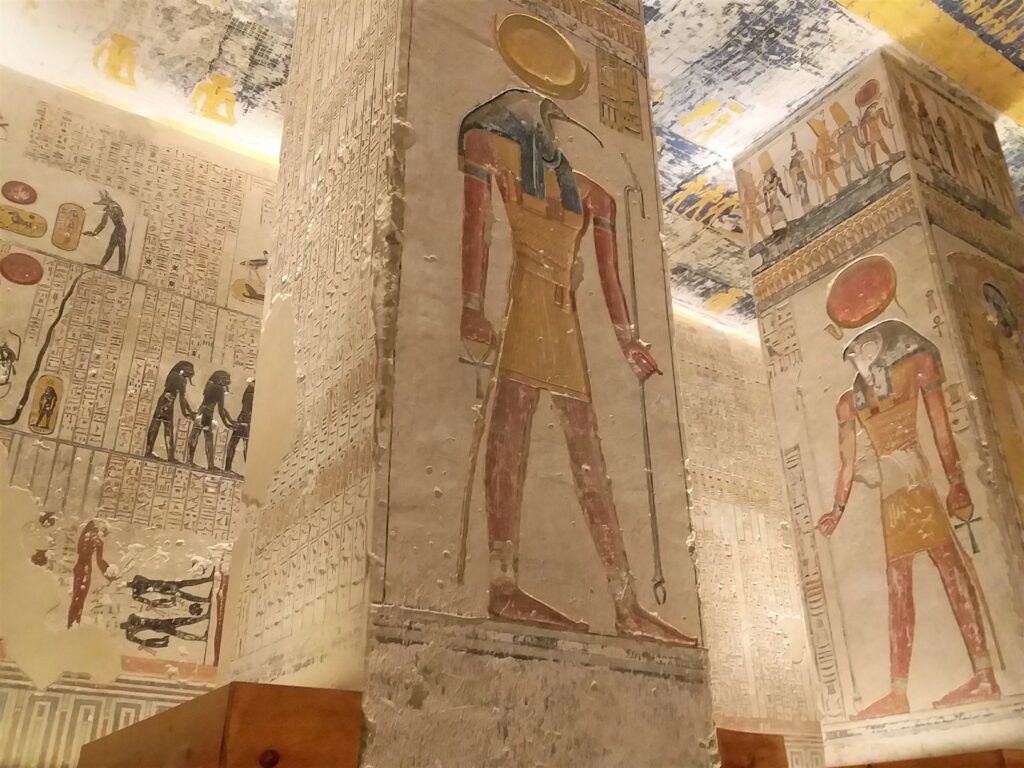
The tomb of Seti I was also spectacular, and featured extraordinary engravings in bas-relief.
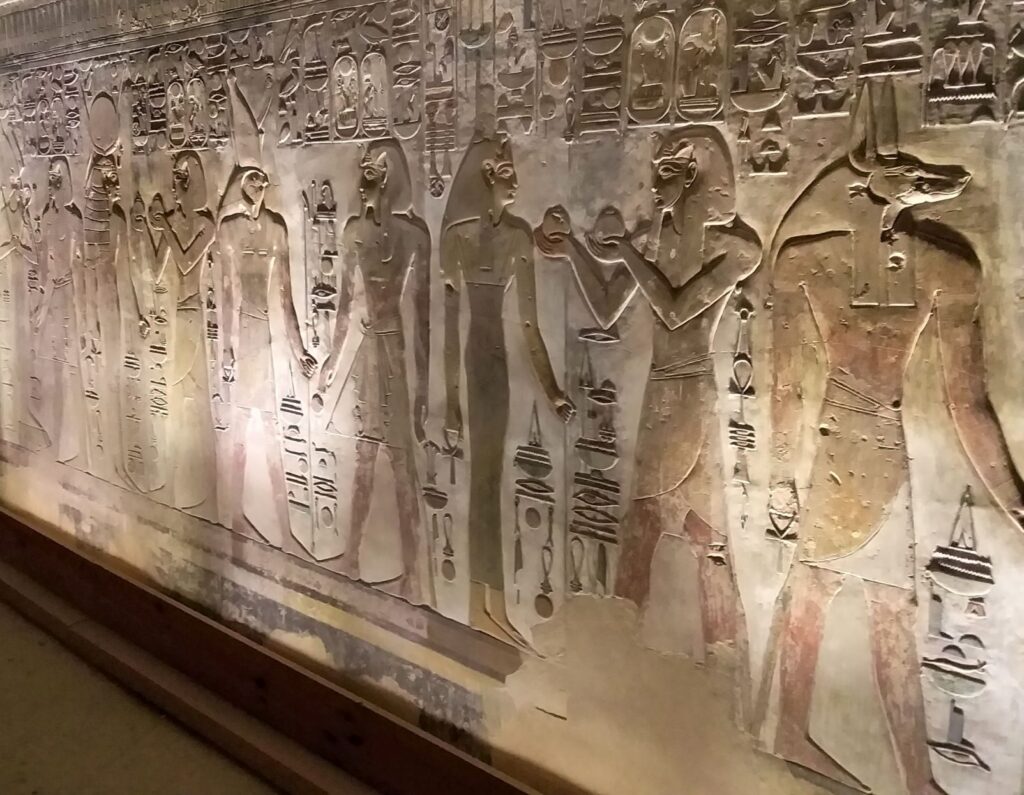
Seti I’s 15 years on the throne of Egypt are remembered for his re-organization of the empire and generation of wealth. Seti also loved a stoush, and spent considerable effort giving his enemies a good smiting.
The humble dung beetle, or scarab, was revered in ancient Egypt. This was not for its remarkable ability to form perfect spheres of dung far bigger than its body size and roll them all around the place, even though this is reason enough to admire this unfeasibly strong and skillful insect engineer. The Egyptians associated the scarab with the god Khepri, who rolled the sun up over the eastern horizon every morning. As a symbol of renewal and rebirth, scarab images are common within the tombs at the Valley of the Kings.
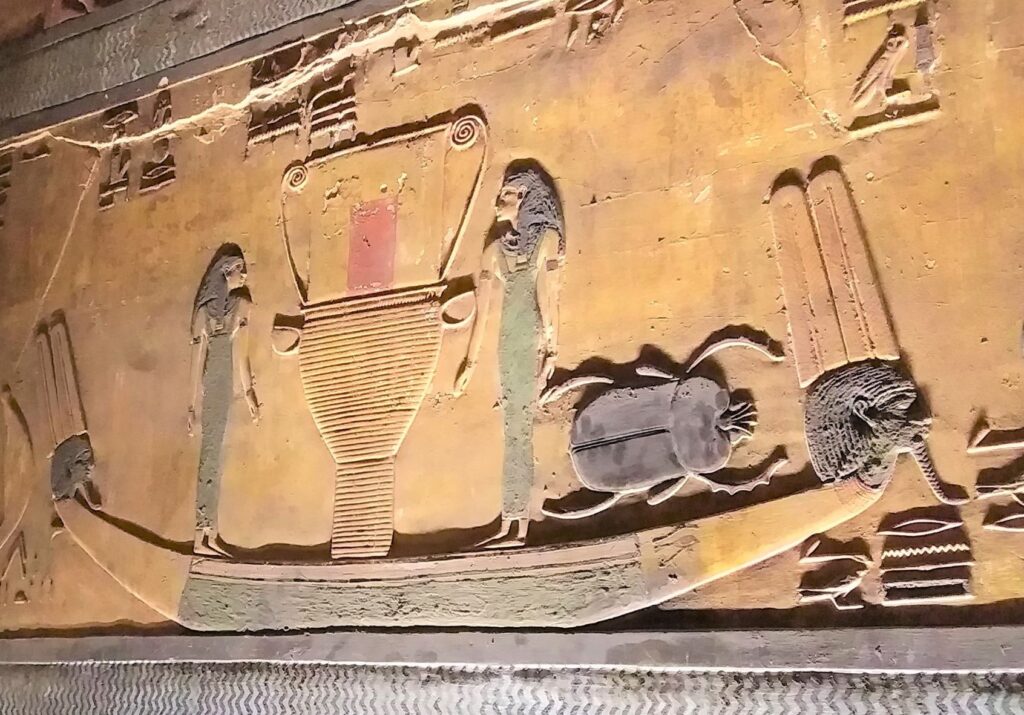
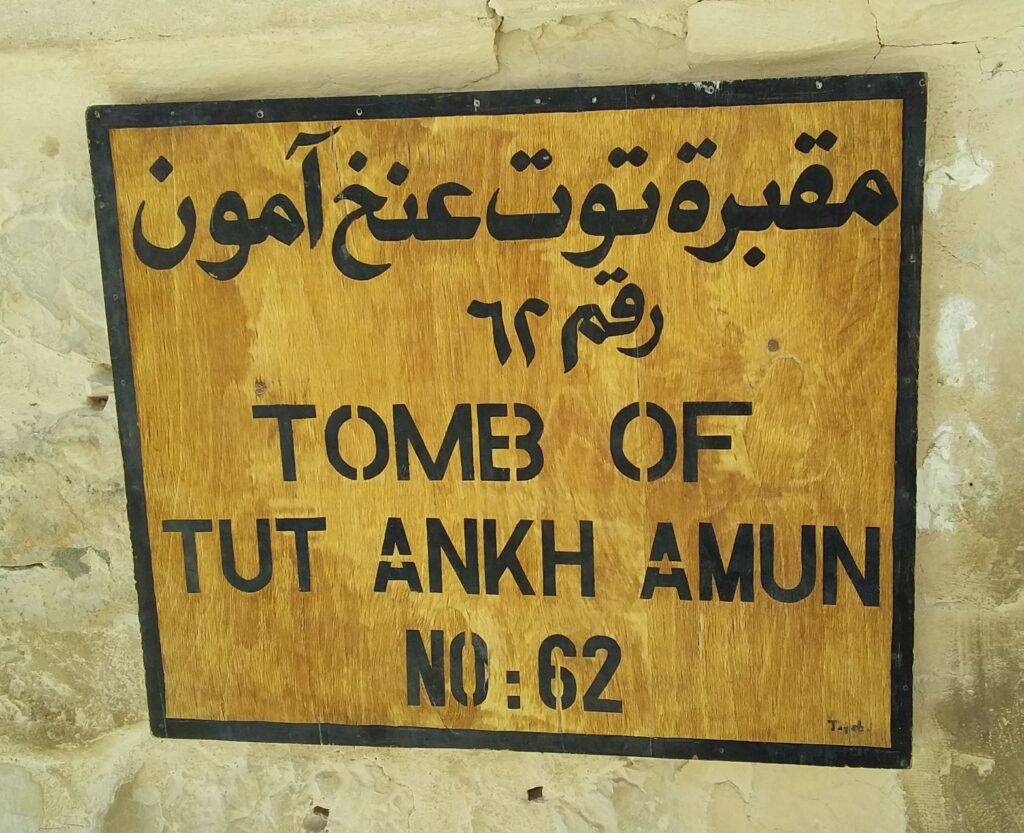
Arguably the most famous of those interred in the Valley of the Kings is Tutankhamun. But more on him later.
By early afternoon, having explored all the available tombs and with the heat cranking, I was ready to head back to the flat. To reach the exit you have to run the gauntlet of the souvenir sellers. One bloke appeared holding some small statues, and stating that they were 20 Egyptian Pounds each. ‘No thankyou mate.’ ‘OK 15.’ ‘No thankyou.’ I walked on past the seller. ‘OK 10.’ ‘No thankyou’ I called over my shoulder. ‘OK two for 10!’ A pandemic is a tough time to be in the souvenir game.
Most visitors arrive at the Valley on a tour bus; in fact I reckon I was the only bloke not on a tour. It did make me wonder if there would be any taxis at the exit point. But sure enough there was a Peugeot 504 waiting for me, complete with custom leopard skin interior. I jumped in with the jovial driver, and reached for my seatbelt. ‘No no no don’t worry’ he said, waving his hand. ‘Egyptian way.’ It was precisely because it was ‘Egyptian way’ that I was keen to belt up. However there didn’t appear to be anywhere to secure the belt, so I gave up. The car windshield had a tinted strip running across the top, so with my height I couldn’t see out the front. Although I wouldn’t know when to brace for impact, I couldn’t see the near misses either.
I got back to my accommodation and flopped down for a breather. I had a great time exploring the Valley of the Kings, and Luxor still had a embarrassment of riches left to share.
To go to the Egyptian Ministry of Tourism and Antiquities’ website for the Valley of the Kings click here
If you likes this post, you may also like Treasures of Luxor, Inside the Pyramids of Giza
Leave a Reply